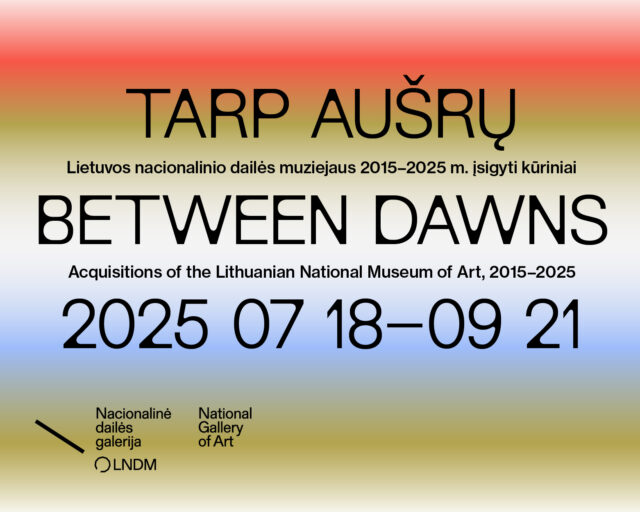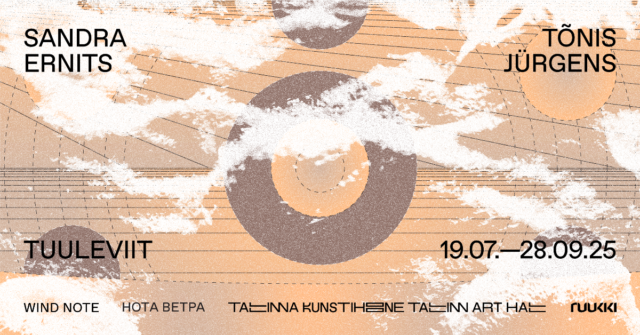The Netherlands is one of those countries that are more sharply defined in one’s imagination than on the map. Country-constructs like these seem familiar even before one visits them, so standing in the middle of their realness can give one a sense of unreality. As a kid, I had an imagined Netherlands, one of tulips, windmills, and cheese. In my teens, a stand-in for the entire country was the red-lit freedom of Amsterdam that I could not and would not have known how to use. Later on, my mind painted a land where funny little Bruegelesque figures once used to populate the towns, helping themselves to subtle still-life feasts, and where now they live surrounded by Droog designs in their architecturally clean houses. It took several visits before the real Netherlands could push out the imagined…
Patricija Jurkšaitytė’s Ducth story is much more sophisticated than mine. It has not been formed by stereotypes and disconnected images but rather by systemic knowledge and understanding that she relays in tiny brushstrokes. The painter cares about the how of the image as much as the what of the image: chamber-like, in tune with the old masters’ ideas, and, whatever you might say, conductive of intimacy. Some of the paintings depict “stripped” interiors so liked by the painter – backgrounds of well-known works with their figures removed. Others show Dutch furniture shops that place only would-be interiors in hangar-like spaces. Almost unwittingly, Charlie Kaufman’s Synecdoche New York comes to mind. A director, kicked around by life, resolves to stage a brutally realistic play about life itself and builds an entire Manhattan set in a giant hangar. Over seventeen years of rehearsing, the director keeps arriving at the point where he started staging the show, and so he must build another city within the fake New York, and then another one and another one… The furniture shop, good as it is at imitating the actual interior, can only superficially fake lives that are to take place therein, trajectories and movements of bodies, moments of sitting down or standing up, lying back or turning round. In it, one can only playact life, realizing all the while that one cannot perform natural movement while observing oneself. It is this unnaturalness of the situation that permeates Patricija Jurkšaitytė’s oeuvre. It is not natural to see empty rooms and gardens that are meant for revelations. It is not natural to see the Netherlands concentrated in one chair and recurring hall after hall. It seems that, similarly to life reconstructions in sham Manhattan, the attempt here is to use structured acts to understand things that, in the final analysis, have no structure or logic, that happen and develop of their own accord.
The images also have an undeniable stage set-like quality to them. Interiors, deserted by their characters, turn out to be inextricably linked to their storylines – a lonely antique chamber has a labyrinthine air, one can still sense the winds of the action that has just been accomplished here. One wants to fill the void, with oneself if not one’s imagination. Also slightly disturbing are the cones of the Gardens of Versailles – parodies of chesterfield sofas – that climb out of the frame and into the exhibition halls. Reiterating both in reality and on the picture plane, they reassure once more: yes, this is a separate world and upon entering it, you are no longer part of the gallery space. Even though show description briefly hints at a supposed contradistinction between exhibition space (“white” and “modern”) and classical formats and materials, the contrast fails to materialize. Gentle friezes underneath the ceiling and occasional glances towards a gallery porch keep reminding that one is in an old building. The balancing between modernity and classics of the paintings reverberates in the halls themselves. Images of the Netherlands, France, England construct a new country here – one of gentle luxury, sophisticated brushstrokes, and numerous silences.
I must confess, however, that the entire show by Patricija Jurkšaitytė, her entire meta-world, simply passes in front of my eyes without registering. It might be entirely my own “achievement”, but after some time, one gets a sense that seeing the show is like reading an historic novel that has no characters – the setting is incredibly beautiful, intelligent, and polished, but in the end completely boring. How long can you stare at a landscape that is not truly accessible to you? Story is precisely what I miss in Dutch Stories – and not because I might despise emptiness or silence. Simply in this case, instead of being more than a million words or thoughts, instead of being all-filling and self-sufficient, this silence rings in one’s ears and reminds about the dreadful lack of action and intrigue.
One could, of course, linger on in this silent cul-de-sac, look for anxiety, fear of emptiness and disappearing. When sets indefinitely repeat within themselves, one is doomed to die in one of them, in a shell of some separate reality. Instead of the bodies that acted in the room, I could see the ones that were taken out – and thus the Dutch, French, or English story would become a narrative of another non-existent land. This memento mori flavor does reap of banality, but it might perhaps encourage one to enter every room instead of just standing in the doorway on one’s feeble feet of imagination… But this is an intense association, too emotional perhaps and too poetic for this sensitively constructed world. So let it be what it is. Perhaps a real Dutch story can be heard somewhere in the silence.
Text originally published on Artnews.lt
See the photo reportage from the exhibition.
Image: Patricija Jurkšaitytė, Dutch Stories, exhibition view, photograph by Arturas Valiauga






























